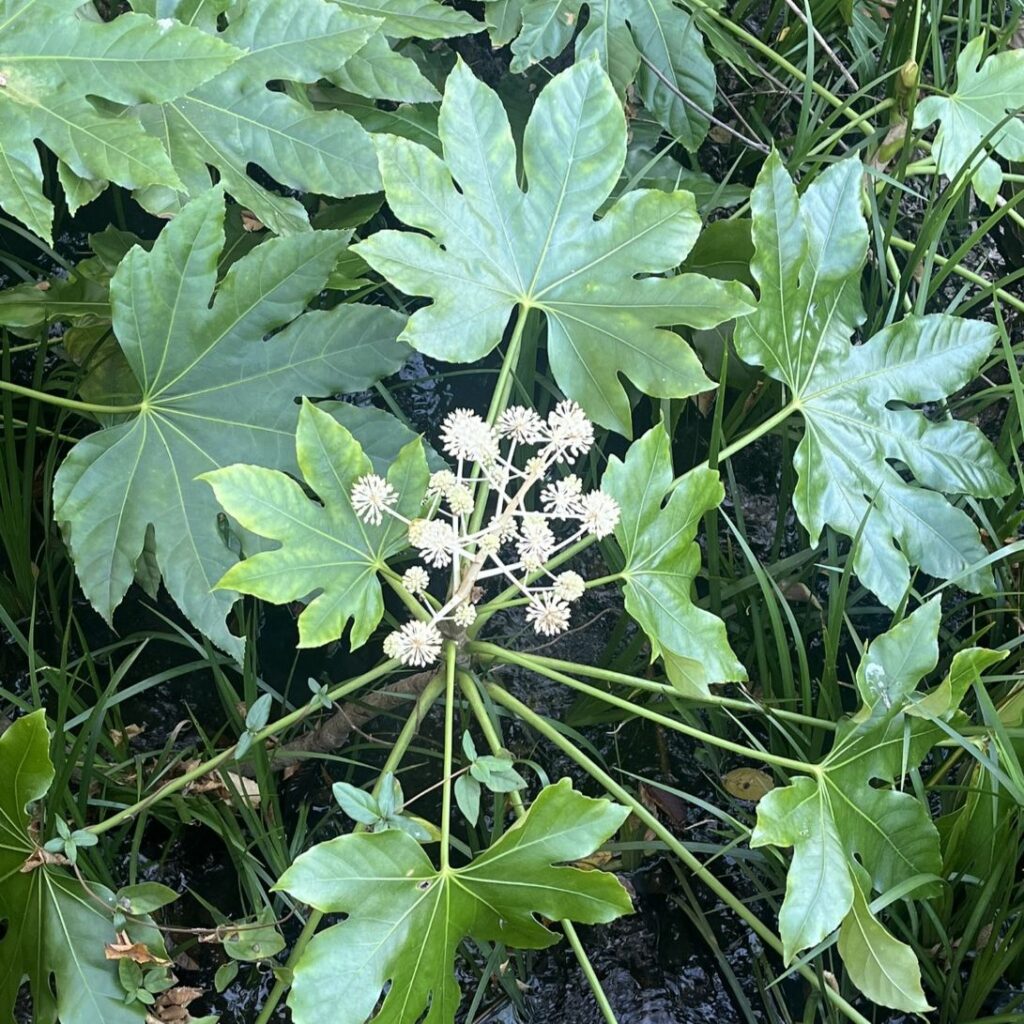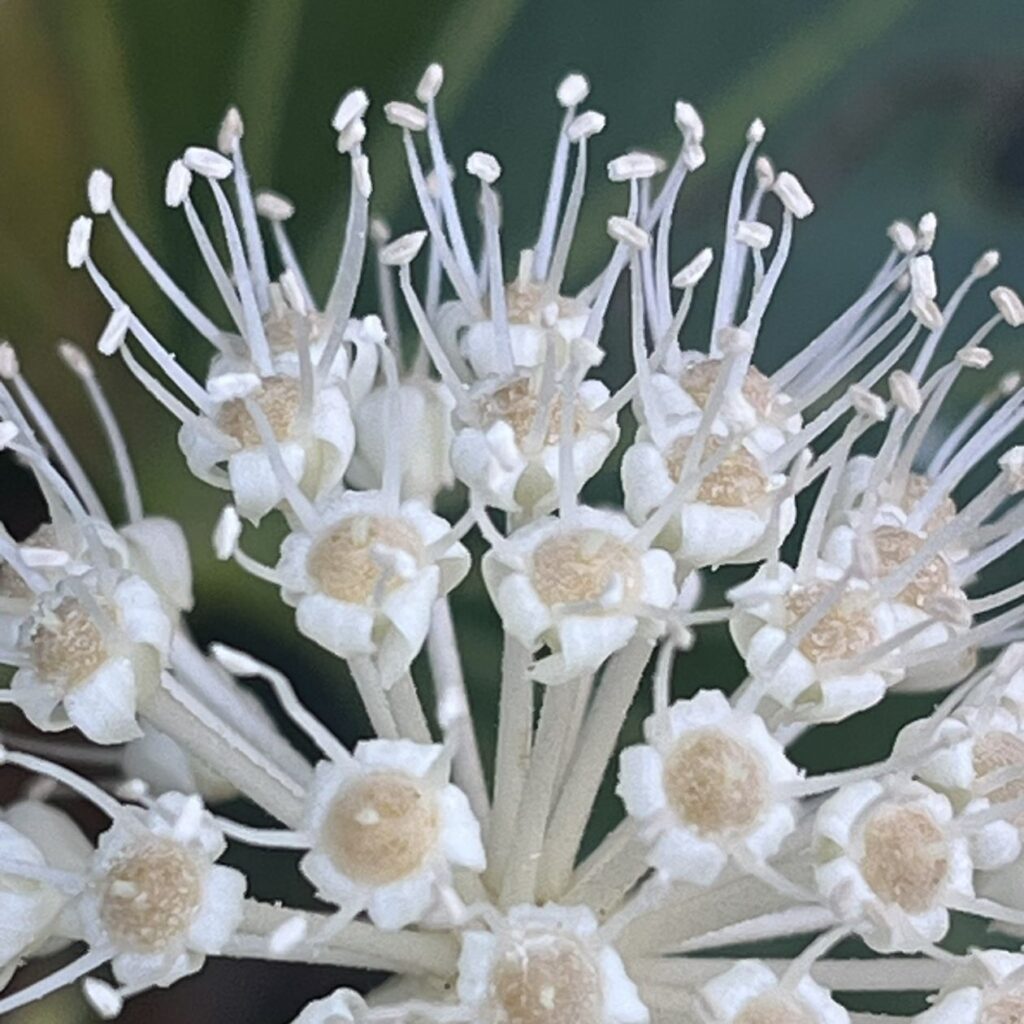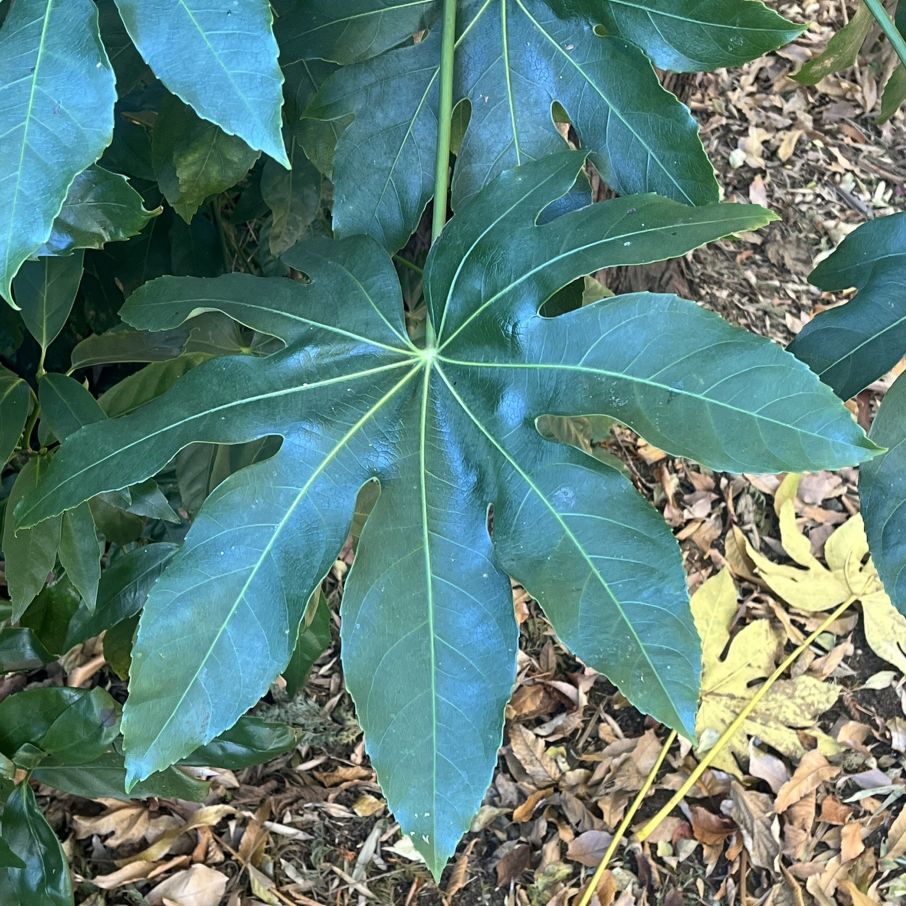ヤツデの花は手鞠のように集まって咲き、上のほうが両性花、下のほうが雄性花。花被が5裂、雄しべが5本で、ゴムのような匂いがします。
Japanese Aralia flowers bloom in clusters like a ball. The upper inflorescence is bisexual, and the lower is male. The florets have five lobes and five stamens, and have a rubbery smell.
【仮名】ヤツデ, テングノハウチワ, ハッカクキンバン
【和名】八手, 天狗羽団扇, 八角金盤
【英名】Japanese Aralia
【学名】Fatsia japonica
【誕生】12/ 13, 12/ 27
【開花】11, 12月
【花色】White
ヤツデ
ヤツデの概要

ヤツデはウコギ科の常緑低木です。本州の関東以南、四国、九州、沖縄に分布し、海岸近くの林内で自生。陽当たりの悪いところでも育ち、「健康」という花言葉があります。神仏の手のように正気を招き入れる一方、邪気を払い除ける大きな葉。白色の花々が小さな手毬のようです。
ヤツデの名前

ヤツデの和名の由来は「八」つに裂けた「手」のような形の葉だから。この八つは「たくさん」という意味で、実際には小さな葉で3裂、大きな葉で13裂と幅があります。形状から「天狗の羽団扇」という別名も。ラテン語の属名ファツィアは和名の別読み「はっしゅ」に由来します。
ヤツデの姿形

ヤツデの樹は葉痕が目立ちます。葉は7~9裂の掌状で互生。柄が長く、表面に光沢があり、縁に鋸歯があります。花は手鞠のように集まって咲き、上のほうが両性花、下のほうが雄性花。花被が5裂、雄しべが5本で、ゴムのような匂いがします。花後は丸い液果が丸く熟して黒変。
ヤツデの利用

ヤツデは葉にファトシンというサポニン配糖体が含まれ、誤食により下痢、嘔吐、溶血などを引き起こします。一方、昔は汲み取り便所の蛆殺しに利用。さらに、葉を乾燥させて生薬「八角金盤」とし、鎮咳、去痰に用いたり、葉を刻んで風呂に入れ、リウマチや痔に用いられました。
Japanese Aralia

Japanese Aralia is an evergreen shrub of the Araliaceae family. It is found in Honshu south of Kanto, Shikoku, Kyushu, and Okinawa, and grows wild in forests near the coast. It grows in places with poor sunlight, so its flower language is “healthy.” The large leaves are like the hands of gods and Buddhas that invite good luck and ward off bad luck. The white flowers look like small balls.
The Japanese name of Japanese Aralia means “eight-split hands” and comes from the shape of the leaves. The eight means “many,” and in fact, the small leaves split into three, and the large leaves split into 13. It is also known as “Tengu’s Feather Fan” due to the shape of the leaves. The Latin genus name Fatsia comes from another way of reading the Japanese name.
Japanese Aralia trees have noticeable leaf scars. The leaves are palmate with 7 to 9 lobes and alternate. The leaf stalks are long, the surface of the leaves is glossy, and the edges of the leaves are sawtoothed. The flowers bloom in clusters like a ball. The upper inflorescence is bisexual, while the lower is male. The florets have 5 lobes and 5 stamens, and have a rubbery smell. After flowering, the round berries ripen and turn black.
Japanese Aralia leaves contain a saponin glycoside called fatosin, which can cause diarrhea, vomiting, and hemolysis if eaten by mistake. On the other hand, in the past, it was used to kill maggots in pit toilets. In addition, the leaves were dried and used as a herbal medicine to suppress coughs and expectorate, or chopped and added to baths to treat rheumatism and hemorrhoids.



